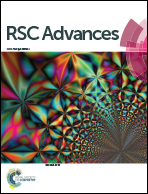Analysing cation-modified magnetic perovskites A2SnFeO6 (A = Ca, Ba): a DFT study
Abstract
Self-consistent DFT-based structural optimizations for understanding the cation effect on various properties of A2SnFeO6 (A = Ca, Ba) perovskites have been figured out in this study. The two-dimensional spin-polarized band structures, along with their corresponding density of states within the mix of two calculation schemes Perdew–Burke–Ernzerhof Generalized Gradient Approximation (PBE-GGA) and Hubbard correlation correction (PBE + U), strongly appeals its half-metallic nature, which has been discussed in detail. The perfect occurrence of the half-metallic nature with high-spin subsystem corresponds to a metal-type spectrum and in contrast to the opposite-spin claims semiconducting behaviour. The effect of significant spin-polarisation creates a ferromagnetism of total 4 (μB) mostly arising at (Fe). The induced magnetism of oxygen atoms is due to the overlapping between Fe-3d-O-2p orbitals. The mechanical strength is characterized from cubic elastic parameters that decide the capability of these materials against various external distortion forces displaying brittle nature. Apart from this, the semi-classical Boltzmann transport theory embedded in BoltzTraP package has been keenly addressed to turn out Seebeck coefficients, electrical and lattice thermal conductivities. The overall study creates a significant momentum in connection with the development of unlocking spintronics, spin dynamics and energy harvesting applications.



 Please wait while we load your content...
Please wait while we load your content...